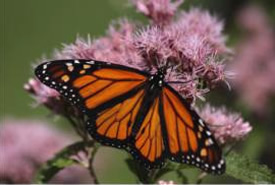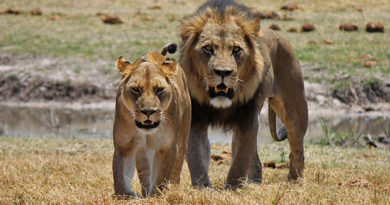Zion National Park, Where Color Lives

In 1909, President Theodore Roosevelt gave the area that is now Zion National Park federal protection. Ten years later, Zion became Utah’s first national park. ©Alexander C. Kafka, flickr
For me, Zion National Park is the place where color lives. That’s how I connect to it.
While other great national parks—such as Grand Canyon National Park at 1,904 square miles—instill awe in us by their sheer size, Zion National Park, a relatively small national park at 229 square miles, wows in a much more subtle manner: with artistry rather than magnitude. In Zion, rock canvases and stone sculptures in colors of cream and pink seem crafted by some ancient Michelangelo rather than by the fancy and whim of nature.
Zion National Park sits at the convergence of three geographic regions: the Colorado Plateau, the Great Basin and the Mojave Desert. This geologic variance coupled with more than 4,000 feet of elevation change makes for an incredibly diverse landscape. Golden meadows with sweeping vistas, red rock mountains with towering white temples, and powerful blue-and-green rivers meet here. More than 900 species of plants—ranging from cacti and desert succulents to riparian trees, shrubs and wildflowers—are daily witnesses to pink cliffs that change tints in the rising and setting sun.

Some describe Zion National Park as a sacred cathedral of light, stone and water. For me, it is more of a dreamscape of rose-colored mountains stretching their spires into the firmament. ©John T. Andrews
Trails in Zion National Park lead deep into side canyons and up narrow ledges to waterfalls, serene spring-fed pools and shaded spots of solitude. Any trail in Zion is all but guaranteed to culminate in an astounding view full of crimson and orange rock formations and flowers in shades of the rainbow, contrasting boldly with the surrounding desert.
The heart of Zion National Park is Zion Canyon, which follows the North Fork of the Virgin River for 6.5 miles beneath cliff walls that soar more than 2,000 feet above the valley below. Red-and-tan Navajo sandstone in the walls alternate with fantastically colored bands of lava and limestone. Stripes and spots of greenery high up create a hanging garden effect.
Zion National Park is home to more than 1,000 species of plants; 78 species of mammals, such as bighorn sheep, elk, mountain lions and mule deer; 291 species of birds, such as peregrine falcons and Mexican spotted owls; 37 species of amphibians and reptiles; and eight species of fish. Some, like the tiny Zion snail, appear here and nowhere else in the world.

Although Zion seems to have been created by some ancient Michelangelo, the Virgin River carved Zion’s features over millions of years. It’s one of the most stunning places on Earth. ©John T. Andrews
The proper names of many of Zion’s animals include hues. In Zion, tiger salamanders and red-spotted toads display their notice-me colors on carmine rocks next to silvery blue-green sagebrush. Violet-green swallows fly above golden-mantled ground squirrels.
Watch the short film titled We the Keepers, below. Produced by the Zion National Park Forever Project, it’s the story of some of those who have made a personal connection to Zion National Park. In it, you’ll hear from a plein air artist, a canyoneer, a climber, a Kaibab Paiute elder and other tribal members, a retired seasonal park ranger who lives just outside of Zion, a wildlife biologist and even a visitor to the park who resides in Japan. All of them have found a personal and unique relationship with Zion.
My own Zion story is about waterfalls that create rainbows above Emerald Pools. It concerns golden eagles and black phoebes that fly to white cliffs that stretch up to a cobalt sky. For me, Zion is a place of living color, where gold soars through the air, yellow scampers across rocks and blue grows up from the ground.
I hope that you soon find your own Zion story, too.
Here’s to finding your true places and natural habitats,
Candy
About the author: Candice Gaukel Andrews View all posts by Candice Gaukel Andrews
A multiple award-winning author and writer specializing in nature-travel topics and environmental issues, Candice has traveled around the world, from the Arctic Circle to Antarctica, and from New Zealand to Scotland’s far northern, remote regions. Her assignments have been equally diverse, from covering Alaska’s Yukon Quest dogsled race to writing a history of the Galapagos Islands to describing and photographing the national snow-sculpting competition in her home state of Wisconsin.
In addition to being a five-time book author, Candice’s work has also appeared in several national and international publications, such as “The Huffington Post” and “Outside Magazine Online.” To read her web columns and see samples of her nature photography, visit her website at www.candiceandrews.com and like her Nature Traveler Facebook page at www.facebook.com/naturetraveler.




